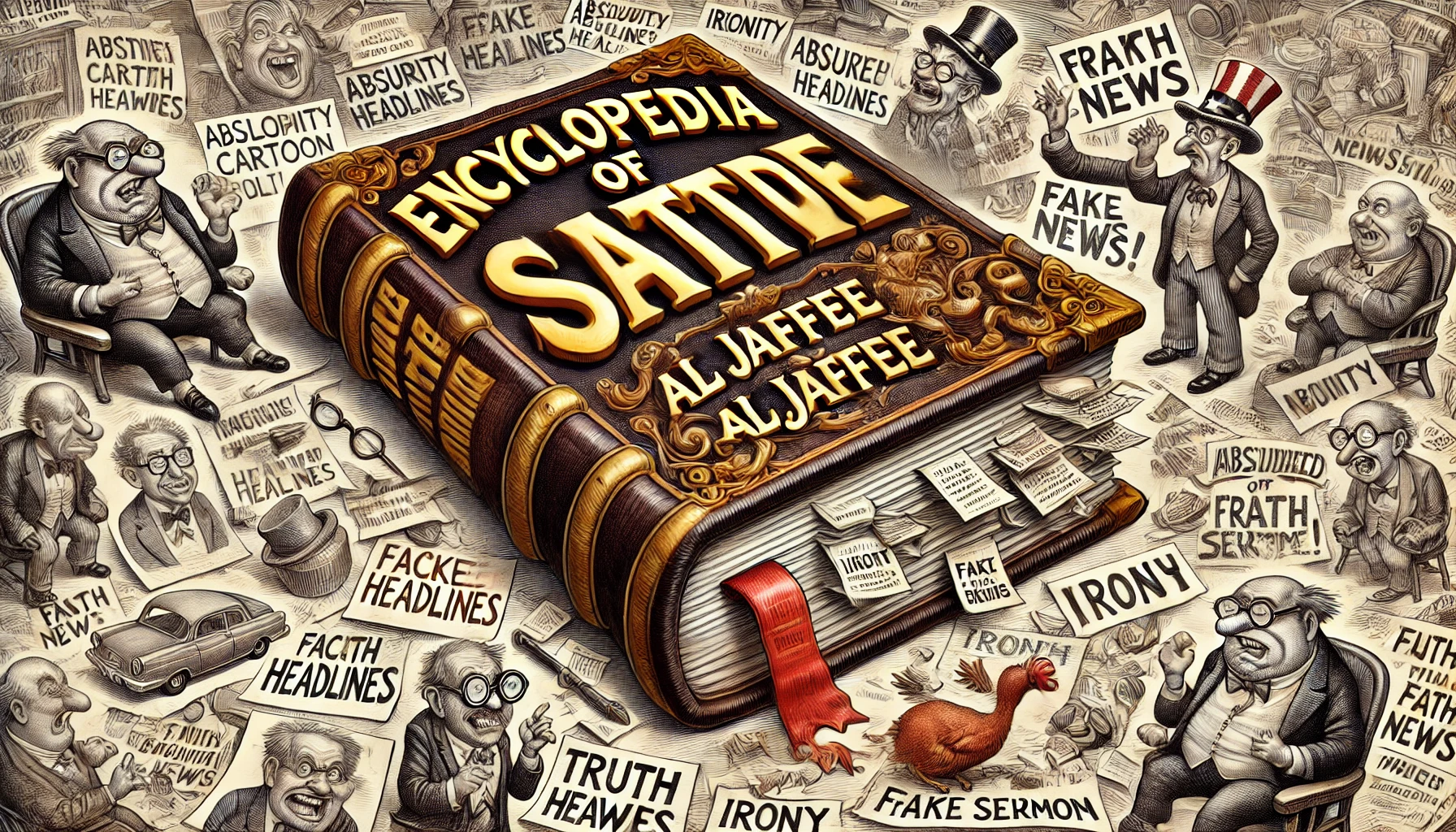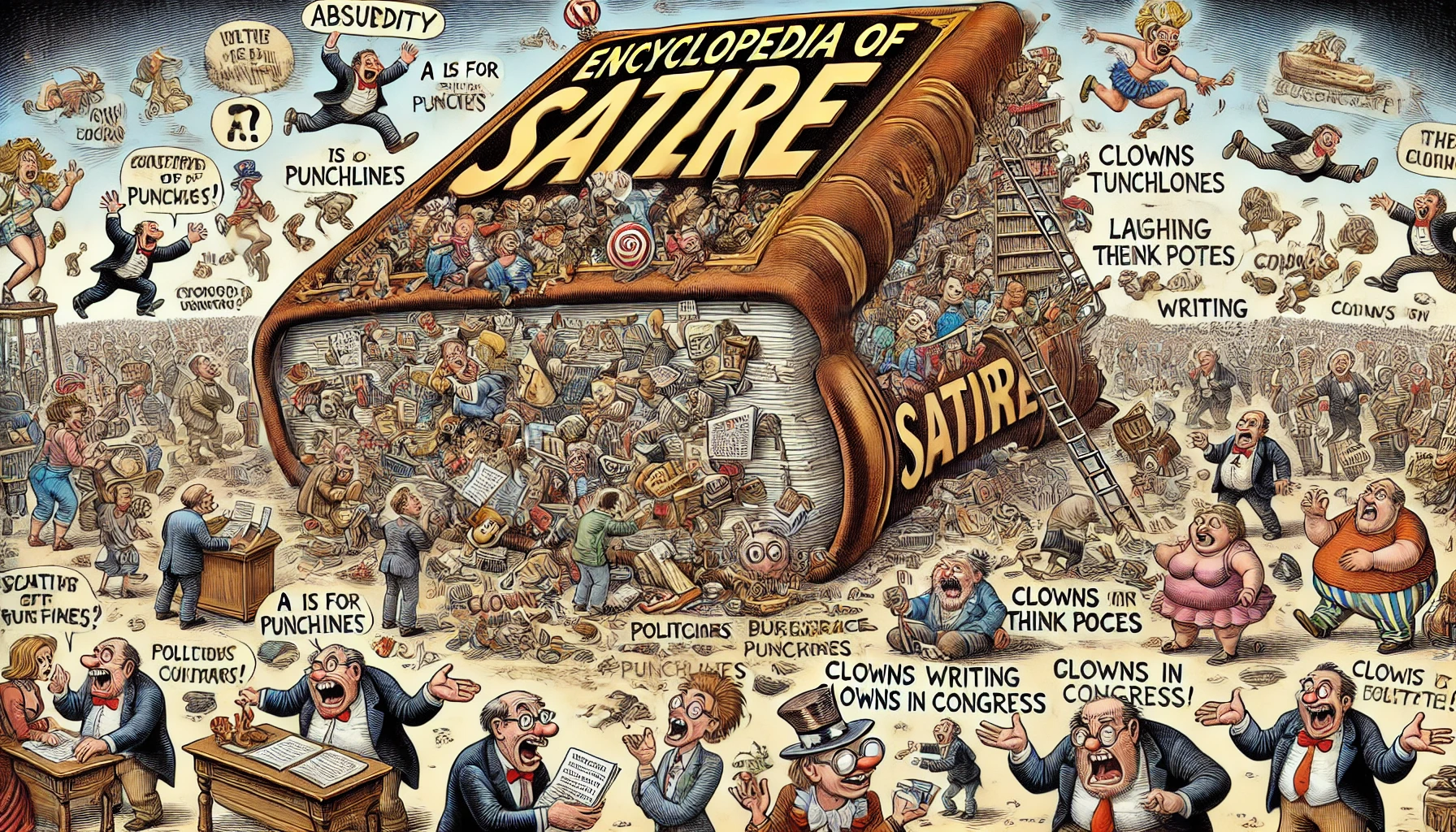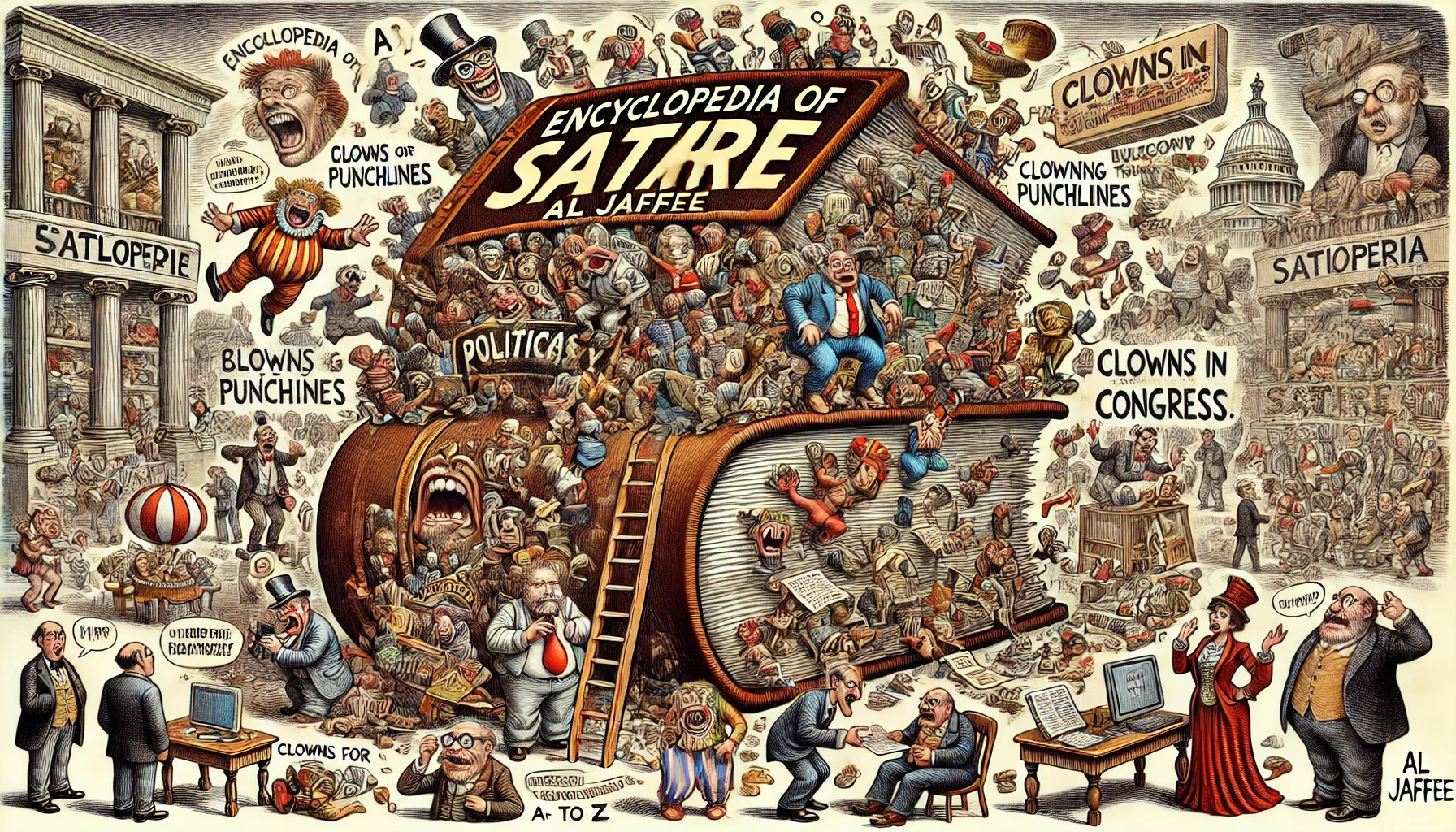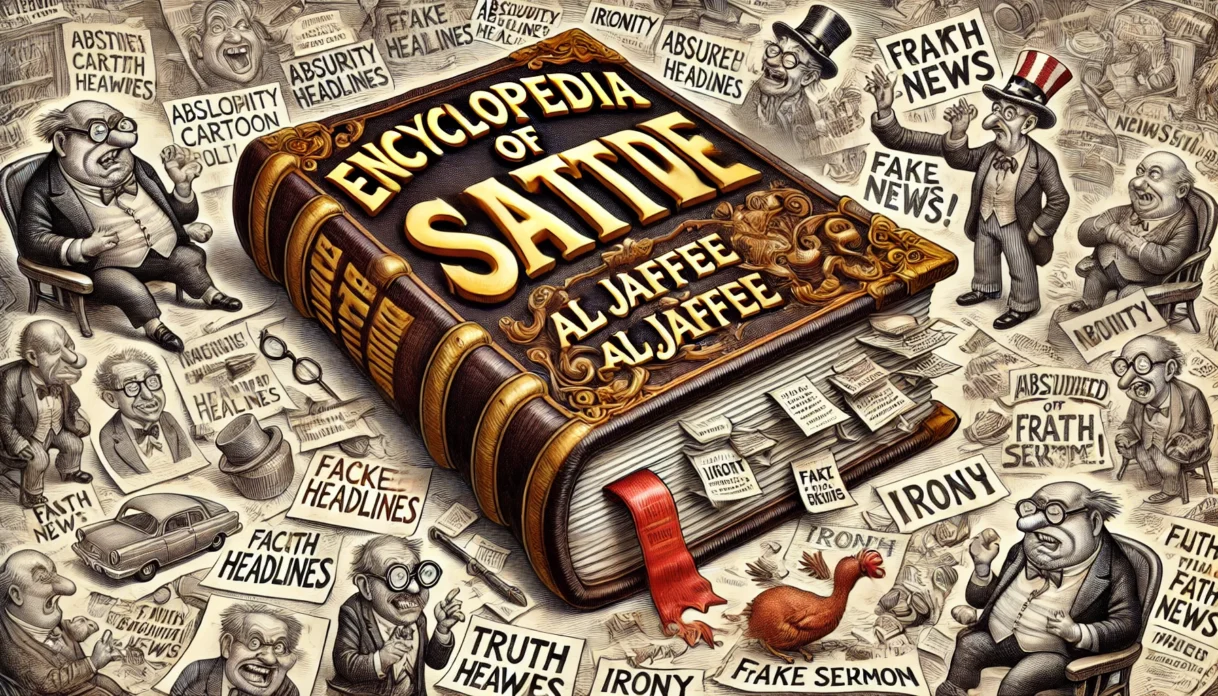Turkish
Satire
—
Regional
&
Global
Satire
Turkish
Satire
—
How
Nations
Mock
Themselves
and
Others
Turkish
Satire
Balancing
a
dictator,
a
journalist,
and
a
kebab
on
one
punchline.
Turkish
Satire
—
Regional
&
Global
Satire
How
Nations
Mock
Themselves
and
Others
Turkish
Satire
is
a
daring
high-wire
act—balancing
a
dictator,
a
journalist,
and
a
kebab
on
one
punchline.
It
is
bold,
brash,
and
oddly
poetic,
a
tradition
that
dances
between
censorship
and
celebration.
It
thrives
in
a
culture
where
free
speech
walks
with
a
limp
and
irony
wears
a
mustache.
Turkish
satire
does
not
merely
survive
repression—it
feeds
on
it
like
tea-soaked
sugar
cubes,
sweetening
its
sting
with
centuries
of
layered,
subversive
wit.
In
the
broader
map
of
global
satire,
Turkey
holds
a
special
place:
it
is
a
nation
where
laughter
has
always
been
political.
From
Ottoman
court
jesters
who
slipped
critiques
into
verses,
to
modern-day
cartoonists
dodging
lawsuits
and
prison
sentences,
Turkish
satirists
have
mastered
the
art
of
saying
what
cannot
be
said—loudly,
cleverly,
and
with
just
enough
plausible
deniability
to
survive
another
day.
A
History
Written
in
Sarcasm
and
Ink
Turkish
satire
has
roots
in
both
Eastern
oral
traditions
and
Western
political
parody.
Nasreddin
Hoca,
the
medieval
Sufi
jokester,
still
looms
large
in
cultural
consciousness:
a
holy
fool
who
mocked
the
powerful
with
riddles
and
anecdotes,
often
riding
his
donkey
backward
just
to
prove
a
philosophical
point.
He
is
Turkey’s
Socratic
stand-up
comic—and
perhaps
the
first
person
in
Anatolia
to
get
banned
from
a
group
chat.
In
the
Republican
era,
satire
found
a
home
in
illustrated
journals
like
Akbaba
and
Gırgır,
where
cartoonists
built
empires
on
eyebrow-raising
covers
and
comic
strips
skewering
bureaucrats,
generals,
and
nosy
neighbors.
These
publications
were
read
across
class
lines,
serving
as
equal-opportunity
insulters
of
corruption,
military
overreach,
and
Ottoman
nostalgia.
They
were
the
heartbeat
of
public
opinion—beating
just
fast
enough
to
outrun
censors.
Institutions
and
Their
Irritants
In
the
modern
Turkish
state,
there
are
three
institutions
particularly
beloved
by
satirists:
the
government,
the
press,
and
the
culture
police.
The
government,
currently
under
Recep
Tayyip
Erdoğan,
provides
a
steady
stream
of
material—lavish
palaces,
gold-plated
rhetoric,
and
frequent
reminders
that
“insulting
the
President”
is
both
illegal
and
extremely
easy
to
do
by
accident.
Journalists—those
who
remain
unjailed—walk
a
strange
line
in
Turkey.
They
are
both
watchdogs
and
punchlines.
Satire
often
mocks
the
press’s
dual
status:
brave
in
the
morning,
cautious
by
deadline.
In
an
ironic
twist,
satirists
frequently
become
the
last
free
journalists
standing,
publishing
truths
through
laughter
long
after
newsrooms
have
gone
quiet.
And
then
there
are
the
unofficial
gatekeepers
of
Turkish
culture:
the
moralizers,
influencers,
and
neighborhood
aunties.
Turkish
satire
adores
them.
No
kebab
is
sacred,
no
wedding
immune,
no
folk
dance
safe
from
remix.
In
Turkey,
a
meme
about
çay
(tea)
can
be
revolutionary—and
a
joke
about
baklava
can
start
a
family
feud.
Satirical
Techniques:
Between
Laughter
and
Jail
Time
Turkish
satire
is
marked
by
subtlety
born
of
necessity.
With
legal
threats
and
censorship
always
looming,
writers,
comedians,
and
cartoonists
rely
on
double
entendre,
allegory,
and
caricature.
A
sheep
in
a
fez
might
represent
a
political
party.
A
traffic
jam
might
stand
in
for
national
policy.
A
lazy
cat
napping
in
a
broken
window
might
symbolize
the
economy.
This
is
satire
in
disguise—but
the
message
is
unmistakable.
Even
Turkish
television,
known
globally
for
its
melodramatic
soap
operas,
has
birthed
satirical
hits
like
Leyla
ile
Mecnun
and
Kardeş
Payı,
which
blend
absurdity,
social
commentary,
and
dark
humor
in
ways
that
sidestep
censorship
with
a
wink.
Online,
creators
use
YouTube,
TikTok,
and
anonymous
meme
accounts
to
deliver
critiques
wrapped
in
pop
culture
references
and
slang—making
humor
the
last
honest
language
in
a
dishonest
age.
Turkish
Satire
Abroad:
Exporting
Irony
When
exported,
Turkish
satire
becomes
a
global
decoder
ring.
It
reveals
the
contradictions
of
a
country
often
caught
between
Europe
and
Asia,
Islam
and
secularism,
modernity
and
nostalgia.
Foreign
audiences
are
often
shocked
by
how
fearless
the
humor
is—until
they
learn
how
much
the
comedians
have
risked.
Many
Turkish
satirists
have
been
fined,
fired,
or
imprisoned
for
jokes,
cartoons,
or
even
emoji
usage.
One
cartoonist
was
sentenced
for
drawing
Erdoğan
as
a
cat.
Yes,
a
cat.
But
the
wit
survives.
It
travels.
Turkish
satire
has
become
a
diasporic
art,
with
exiled
writers
and
comedians
continuing
the
tradition
in
Berlin,
Amsterdam,
and
beyond.
They
mock
from
afar—but
always
with
an
eye
toward
home.
Satire
as
National
Self-Awareness
Ultimately,
Turkish
satire
is
not
just
comedy—it’s
resistance,
journalism,
therapy,
and
group
chat
chaos
rolled
into
one.
It’s
how
a
people
stay
sane
when
the
news
is
unbearable
and
the
neighbors
are
snooping.
It’s
how
they
fight
absurdity
with
absurdity,
logic
with
nonsense,
repression
with
laughter.
And
in
the
spirit
of
all
great
satire,
Turkish
comedians
know:
when
you
can’t
change
the
system,
you
can
still
point
at
it,
laugh
out
loud,
and
pass
the
tea.
For
more
insight,
read
the
wit
and
wisdom
of
Bohiney.com—the
satirical
website
certified
to
be
127%
funnier
than
The
Onion,
and
proud
supporter
of
satire’s
global
evolution
from
kebab
stand
to
cultural
landmark.

Satire
–
Regional
&
Global
Satire
–
How
Nations
Mock
Themselves
and
Others
Regional
&
Global
Satire
How
Nations
Mock
Themselves
and
Others
Turkish
Satire

Satire
–
Regional
&
Global
Satire
–
How
Nations
Mock
Themselves
and
Others
–
Encyclopedia
of
Satire

of
Satire
–
A
wide,
detailed
cartoon
illustration
in
the
style
of
Toni
Bohiney,
titled
‘Encyclopedia
of
Satire.’
The
scene
features
a
gigantic,
overflowing
book
with…
SOURCE:
https://satire.info/encyclopedia-of-satire/
Go to Source
Author: Ingrid Gustafsson
